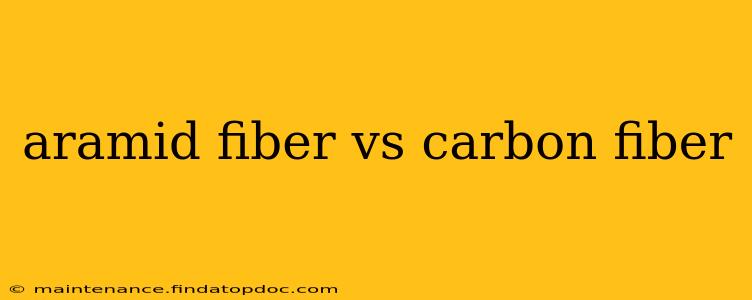Choosing between aramid fiber and carbon fiber often depends on the specific application, as both materials offer unique strengths and weaknesses. This in-depth comparison will explore their key differences, helping you understand which material best suits your needs.
What is Aramid Fiber?
Aramid fiber is a synthetic fiber known for its exceptionally high tensile strength-to-weight ratio. This means it's incredibly strong for its weight. The most well-known type of aramid fiber is Kevlar®, but other brands exist with slightly different properties. Aramid's strength comes from its highly ordered molecular structure, creating strong intermolecular bonds. It's resistant to many chemicals and abrasion, making it ideal for applications requiring high strength and durability.
What is Carbon Fiber?
Carbon fiber is another high-strength, lightweight material, but its properties differ significantly from aramid. Carbon fiber is made from thin strands of carbon atoms bonded together in a crystalline structure. This structure gives carbon fiber exceptional stiffness and tensile strength, even surpassing aramid fiber in certain aspects. However, it is more brittle than aramid fiber.
Aramid Fiber vs. Carbon Fiber: Key Differences
| Feature | Aramid Fiber | Carbon Fiber |
|---|---|---|
| Tensile Strength | Very high, excellent strength-to-weight ratio | Extremely high, often surpasses aramid fiber |
| Stiffness | Moderate | Very high, exceptionally stiff |
| Flexibility | More flexible | Less flexible, more brittle |
| Impact Resistance | High | Lower |
| Cost | Generally less expensive | Generally more expensive |
| Chemical Resistance | Excellent | Good, but can be affected by certain chemicals |
| Heat Resistance | Moderate, begins to degrade at high temps | Higher heat resistance than aramid |
Which Material is Stronger?
While both are incredibly strong, carbon fiber generally boasts higher tensile strength, particularly in terms of stiffness. Aramid fiber excels in its impact resistance and overall toughness, meaning it can better withstand sudden shocks and impacts. The "stronger" material depends entirely on the specific application and the type of stress it will endure.
What are the Applications of Aramid Fiber?
Aramid fiber's high strength and flexibility make it ideal for various applications:
- Body armor: Its impact resistance protects against bullets and shrapnel.
- Protective clothing: Used in firefighter gear, cut-resistant gloves, and other protective apparel.
- Reinforcement materials: Found in tires, ropes, and composite materials for added strength.
- Aerospace: Used in some aircraft components due to its high strength-to-weight ratio.
What are the Applications of Carbon Fiber?
Carbon fiber's high stiffness and strength make it suitable for performance-critical applications:
- Aerospace: Widely used in aircraft structures, satellites, and spacecraft due to its lightweight and high-strength properties.
- Automotive: Found in high-performance car parts, improving fuel efficiency and performance.
- Sporting goods: Used in bicycles, tennis racquets, and golf clubs to enhance performance.
- Wind turbine blades: Its stiffness and strength enable the construction of longer and more efficient blades.
Is Carbon Fiber More Expensive Than Aramid Fiber?
Yes, carbon fiber is generally more expensive than aramid fiber. The manufacturing process of carbon fiber is more complex and energy-intensive, contributing to its higher cost. This price difference should be considered when choosing a material for a project.
What are the Main Differences in Manufacturing?
Aramid fiber is produced through a solution spinning process, where a viscous solution of aramid polymer is extruded through spinnerets to form fibers. Carbon fiber manufacturing is more involved, typically involving the pyrolysis of polyacrylonitrile (PAN) fibers or pitch-based fibers at high temperatures to achieve the carbon structure.
Conclusion
Both aramid and carbon fiber are exceptional materials with distinct properties. The best choice depends heavily on the intended application and the type of stress the material will face. Aramid fiber's superior impact resistance and cost-effectiveness often make it preferable for protective applications, while carbon fiber's exceptional stiffness and strength are better suited to high-performance applications where weight reduction is crucial. Understanding these differences is essential for selecting the right material for your specific project.
